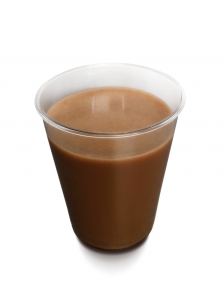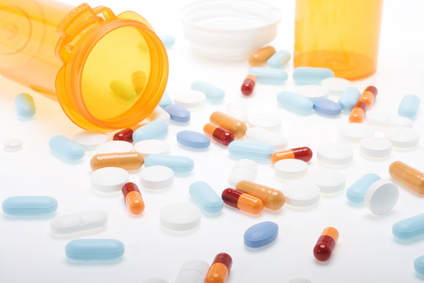Carbs, Protein & Performance
What percentage of my diet should come from carbohydrates? … Should I exercise on empty? … How much protein should I eat after I lift weights? … Is whey the best source of protein?
These are just a few of the questions addressed at the annual meeting of SCAN, the Sports And Cardiovascular Nutritionist’s practice group of the American Dietetic Association (www.SCANdpg.org). Over 400 sports dietitians gather to learn the latest news from prominent sports nutrition researchers. I hope this information will help you choose a winning sports diet.
Carbohydrate Update
Louise Burke, PhD, Director of Sports Nutrition at the Australian Institute of Sport, addressed the following questions:
• What’s the best percentages of carbohydrates, protein, and fat for a sports diet — 40-30-30 or 60-25-15?
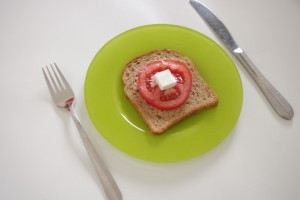 Neither! A better approach is to define nutrient needs according to body weight. For example, the International Olympic Committee developed these guidelines:
Neither! A better approach is to define nutrient needs according to body weight. For example, the International Olympic Committee developed these guidelines:
Intensity of exercise gram carb/kg body wt gram carb/lb body wt
Low intensity 3-5 g 1.5-2.5
Moderate (~1 hour/day): 5-7 g 2.3-3.2
Endurance (1-3 hours/d): 6-10 g 2.5-4.5
Extreme (>4-5 hours/d): 8-12 g 3.5-5.5
• How much should I eat during exercise?
During exercise that lasts 1 to 2.5 hours, you want to target 30 to 60 grams of carbohydrate (120 to 240 calories) per hour. That’s about 1 to 2 gels or 16 to 32 ounces of a sports drink per hour (after the first hour, if you ate a pre-exercise meal or snack)
During endurance exercise, 60 to 90 grams of different sources of carbohydrates (such as sports drink, banana, gummy candy) per hour is appropriate, as tolerated. Consuming the higher end of the range (90 g, as compared to 60 g) is associated with greater stamina and endurance.
• How long does it take to refuel from exhaustive exercise?
If you eat a carb-rich sports diet, you can replenish depleted glycogen stores in 24 to 36 hours post-exercise (with no exercise during that time). While it’s important to pay attention to your recovery diet, most athletes do not need to eat immediately after exercise unless they are doing double workouts. (Within an after exercise, yes; immediately, no.)
• What can I do if I cannot tolerate any food during exercise?
Try mouth swishing with a sports drink. This sends a message to the brain that energy is forthcoming and you’ll feel more energetic. Swishing can enhance performance by 2% to 3% if you are exercising on empty and have not eaten pre-exercise—as often happens with morning exercisers. (Swishing seems to be less beneficial after a pre-exercise meal, but more research is needed to verify those findings.)
• Should I train with poorly fueled muscles, as a means to teach my body to burn more fat, so it spares the limited glycogen stores?
 Training with low glycogen stores (“train low”) drives up the metabolic adaptations to burn more fat. By burning fat instead of glycogen, you’ll spare the limited glycogen stores. Theoretically, this should enhance stamina and endurance because glycogen depletion is associated with fatigue. To date, “training low” has been most effective in research with untrained individuals. Athletes who exercise with depleted glycogen are unable to exercise at high intensity and that may hinder performance.
Training with low glycogen stores (“train low”) drives up the metabolic adaptations to burn more fat. By burning fat instead of glycogen, you’ll spare the limited glycogen stores. Theoretically, this should enhance stamina and endurance because glycogen depletion is associated with fatigue. To date, “training low” has been most effective in research with untrained individuals. Athletes who exercise with depleted glycogen are unable to exercise at high intensity and that may hinder performance.
Training with low glycogen during lower intensity workouts might be one way to stimulate the muscle adaptations to burn more fat (and thus spare the limited glycogen stores). But athletes should do their high intensity workouts when they are fully glycogen-loaded.
Exercise physiologist and researcher John Hawley, PhD of Melbourne, Australia acknowledged that train low/compete high is receiving a lot of attention among serious endurance and ultra-distance athletes. Hawley suggests “train low” should be defined as “train at 50% of resting muscle glycogen, 50% of the time”—and only for selected sessions. Training with low carbohydrate availability can be achieved by exercising with 1) low blood glucose, or 2) low muscle glycogen stores. Both generate adaptations that promote the training response and might be advantageous to competitive endurance athletes. Hawley cautions serious athletes that “training low” compromises training intensity and may lead to inferior performance during an event, particularly if the athlete needs to do a competitive sprint to the finish. That final sprint often determines who wins…
Protein Update
Stuart Phillips, PhD, professor of kinesiology, McMaster University in Ontario, Canada presented an update on protein, answering these questions:
• Do athletes need more protein than non-athletes?
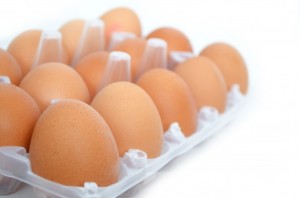 While the recommended protein intake for the average American is 0.4 gram protein per pound body weight (0.8 grm protein per kg), most exercise scientists agree that athletes need a more to optimize muscular development: 0.5 to 0.8 grams protein per pound (1.2 to 1.7 grams of protein per kilogram) body weight per day. However, most young women and men generally consume about 0.55 to 0.65 g protein/lb (1.2 g and 1.4 g protein/kg) body weight per day, respectively. They can appropriately meet their higher need without supplements.
While the recommended protein intake for the average American is 0.4 gram protein per pound body weight (0.8 grm protein per kg), most exercise scientists agree that athletes need a more to optimize muscular development: 0.5 to 0.8 grams protein per pound (1.2 to 1.7 grams of protein per kilogram) body weight per day. However, most young women and men generally consume about 0.55 to 0.65 g protein/lb (1.2 g and 1.4 g protein/kg) body weight per day, respectively. They can appropriately meet their higher need without supplements.
• How much protein do I need after I lift weights?
Consuming 20 grams of protein-rich food (Greek yogurt, tuna sandwich, 16 oz. chocolate milk) after resistance exercise is plenty to optimize the rate of muscle synthesis. Athletes should then continue to eat protein and carbs at meals and snacks throughout the day.
The highest rate of protein synthesis is 3 to 5 hours post-exercise. This raises the question: Should athletes who work out twice a day plan to avoid exercising during that time frame? The “good stuff” (building muscle) happens during rest and recovery and the “bad stuff” (muscle damage) happens during exercise. Remember: rest is an essential part of a strength training program!
• Should I buy whey protein supplements?
Probably not, unless you are a frail, elderly person with a limited food intake. Drinking milk (20% whey, 80% casein) and eating a balanced sports diet with adequate protein from many sources can be as effective as whey supplements. Hard, hard work is the basic trigger for bigger muscles!
From The Athlete’s Kitchen
Copyright: Nancy Clark MS RD CSSD, April 2011
Nancy Clark, MS, RD, CSSD (Board Certified Specialist in Sports Dietetics) helps both casual and competitive athletes win with nutrition. Her private practice is in Newton, MA (617-795-1875). Nancy Clark’s Sports Nutrition Guidebook and her food guides for new runners, marathoners offer additional information. They are available at www.nancyclarkrd.com. See also sportsnutritionworkshop.com.
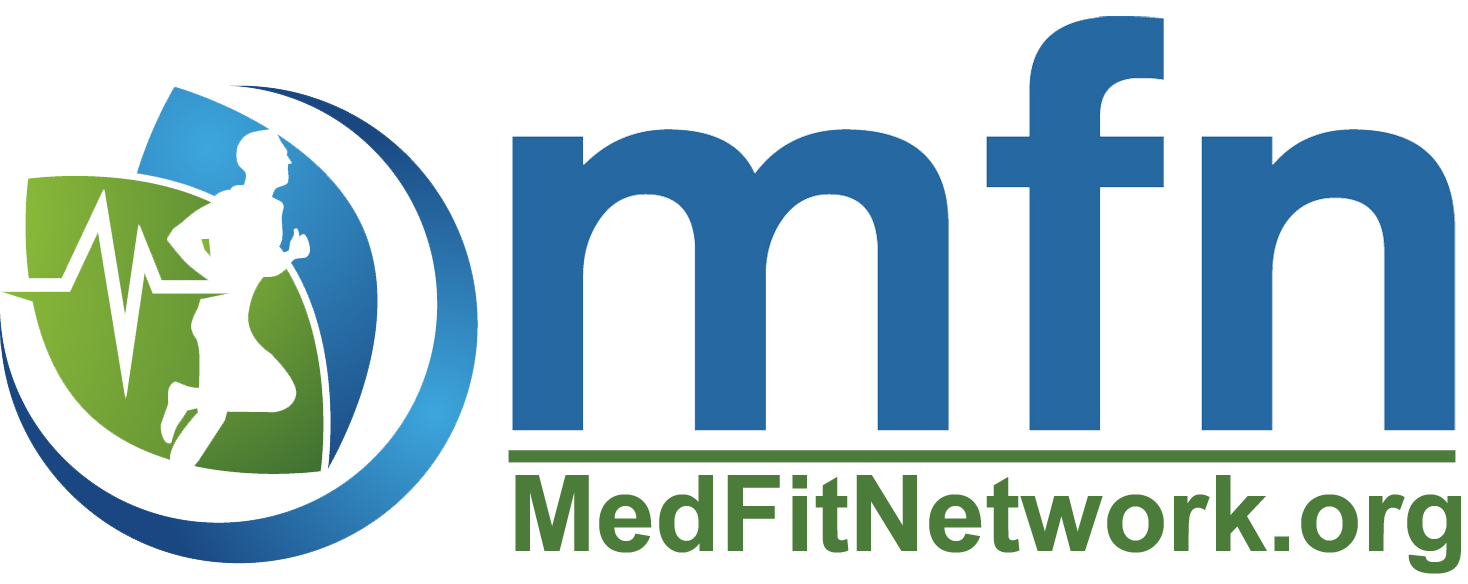

 Of course, everyone’s diet/fitness level can always use improvements, and there’s no denying that America has a weight problem. Although The Biggest Loser can prompt some good discussions about diet and exercise, it promotes unhealthy, unrealistic methods of weight loss. The contestants’ diets are severely restricted to around 1,200 calories a day. Using this barely minimal caloric intake as fuel, they exercise for 4-6 hours a day until people frequently collapse or get physically sick. Then the trainers scream at them to shake it off, shaming them into believing they can – and should – push through the pain and exhaustion. As if they really wanted to lose weight badly enough, their will power would prevail over their body. Contestants are expected to lose several pounds each week, when a healthy rate is 1-2 pounds a week at the most. If this doesn’t encourage eating disorders, I don’t know what would. Off camera, it’s rumored that contestants will do anything to get the numbers on the scale lower, like dehydrating themselves or using laxatives or other methods to lose weight faster.
Of course, everyone’s diet/fitness level can always use improvements, and there’s no denying that America has a weight problem. Although The Biggest Loser can prompt some good discussions about diet and exercise, it promotes unhealthy, unrealistic methods of weight loss. The contestants’ diets are severely restricted to around 1,200 calories a day. Using this barely minimal caloric intake as fuel, they exercise for 4-6 hours a day until people frequently collapse or get physically sick. Then the trainers scream at them to shake it off, shaming them into believing they can – and should – push through the pain and exhaustion. As if they really wanted to lose weight badly enough, their will power would prevail over their body. Contestants are expected to lose several pounds each week, when a healthy rate is 1-2 pounds a week at the most. If this doesn’t encourage eating disorders, I don’t know what would. Off camera, it’s rumored that contestants will do anything to get the numbers on the scale lower, like dehydrating themselves or using laxatives or other methods to lose weight faster.
 Adding on exercise does not equate to losing body fat. In a 16-week study, untrained women (ages 18 to 34) built up to 40 minutes of hard cardio or weight lifting three days a week. They were told to not change their diet, and they saw no changes in body fatness.(1) Creating a calorie deficit by eating less food seems to be more effective than simply adding on exercise to try to lose weight.
Adding on exercise does not equate to losing body fat. In a 16-week study, untrained women (ages 18 to 34) built up to 40 minutes of hard cardio or weight lifting three days a week. They were told to not change their diet, and they saw no changes in body fatness.(1) Creating a calorie deficit by eating less food seems to be more effective than simply adding on exercise to try to lose weight.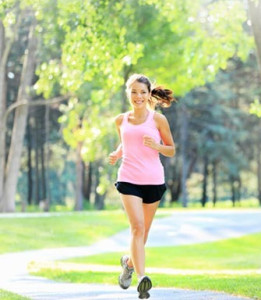 MYTH: If you train for a marathon or triathlon, surely your body fat will melt away.
MYTH: If you train for a marathon or triathlon, surely your body fat will melt away. looking at exercise for weight loss, the men lost 11.5 pounds and the women maintained weight, even though they did the same amount of exercise.(6) In another study, men who did an 18-month marathon training program reported eating about 500 more calories per day and lost about five pounds of fat. The women reported eating only 60 more calories, despite having added on 50 miles per week of running. They lost only two pounds.(7)
looking at exercise for weight loss, the men lost 11.5 pounds and the women maintained weight, even though they did the same amount of exercise.(6) In another study, men who did an 18-month marathon training program reported eating about 500 more calories per day and lost about five pounds of fat. The women reported eating only 60 more calories, despite having added on 50 miles per week of running. They lost only two pounds.(7)
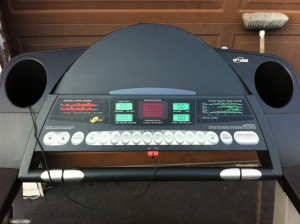

 • Water is the solvent for biochemical reactions. Your body cannot function without sufficient water, as noted by the fact that athletes die from dehydration.
• Water is the solvent for biochemical reactions. Your body cannot function without sufficient water, as noted by the fact that athletes die from dehydration. • Coffee is a popular source of water. Although once thought to have a diuretic effect, current research indicates coffee (in amounts normally consumed) hydrates as well as water over a 24-hour period. That is, after drinking coffee, you may urinate sooner, but you will not urinate more than you consume. Army research on caffeine and dehydration confirms coffee is an acceptable source of fluids for athletes, even during exercise in the heat. Hence, coffee and other caffeinated beverages such as tea or cola count towards your water intake.
• Coffee is a popular source of water. Although once thought to have a diuretic effect, current research indicates coffee (in amounts normally consumed) hydrates as well as water over a 24-hour period. That is, after drinking coffee, you may urinate sooner, but you will not urinate more than you consume. Army research on caffeine and dehydration confirms coffee is an acceptable source of fluids for athletes, even during exercise in the heat. Hence, coffee and other caffeinated beverages such as tea or cola count towards your water intake. st athletes who lose more than 2% of their body weight (3 lbs for a 150-pound athlete) lose both their mental edge and their ability to perform optimally in hot weather. Yet, during cold weather, you are less likely to experience reduced performance, even at 3% dehydration. Three to 5% dehydration does not seem to affect muscle strength or performance during short intense bouts of anaerobic exercise, such as weight lifting. But distance runners slow their pace by ~2% for each percent body weight lost by dehydration. That means, if you weigh 150 pounds and lose 3 pounds sweat (2% dehydration), your 8-minute mile slows to an 8:19 pace. That’s preventable!
st athletes who lose more than 2% of their body weight (3 lbs for a 150-pound athlete) lose both their mental edge and their ability to perform optimally in hot weather. Yet, during cold weather, you are less likely to experience reduced performance, even at 3% dehydration. Three to 5% dehydration does not seem to affect muscle strength or performance during short intense bouts of anaerobic exercise, such as weight lifting. But distance runners slow their pace by ~2% for each percent body weight lost by dehydration. That means, if you weigh 150 pounds and lose 3 pounds sweat (2% dehydration), your 8-minute mile slows to an 8:19 pace. That’s preventable!
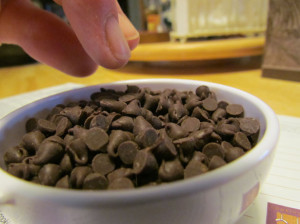

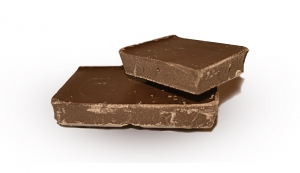 However, less-processed dark chocolate can be considered a healthier choice. Chocolate is made from cocoa, a plant that is a rich source of health-protective phytochemicals (just like you’d get from fruits, vegetables, and whole grains). Two tablespoons natural cocoa power (the kind used in baking) offers the antioxidant power of 3/4 cup blueberries or 1.5 glasses red wine. Unfortunately, dark chocolate has a slightly bitter taste and most people prefer the sweeter milk chocolate, a poorer source of phytochemicals. (We need to raise our children on dark chocolate, so they will they learn to prefer it!)
However, less-processed dark chocolate can be considered a healthier choice. Chocolate is made from cocoa, a plant that is a rich source of health-protective phytochemicals (just like you’d get from fruits, vegetables, and whole grains). Two tablespoons natural cocoa power (the kind used in baking) offers the antioxidant power of 3/4 cup blueberries or 1.5 glasses red wine. Unfortunately, dark chocolate has a slightly bitter taste and most people prefer the sweeter milk chocolate, a poorer source of phytochemicals. (We need to raise our children on dark chocolate, so they will they learn to prefer it!)